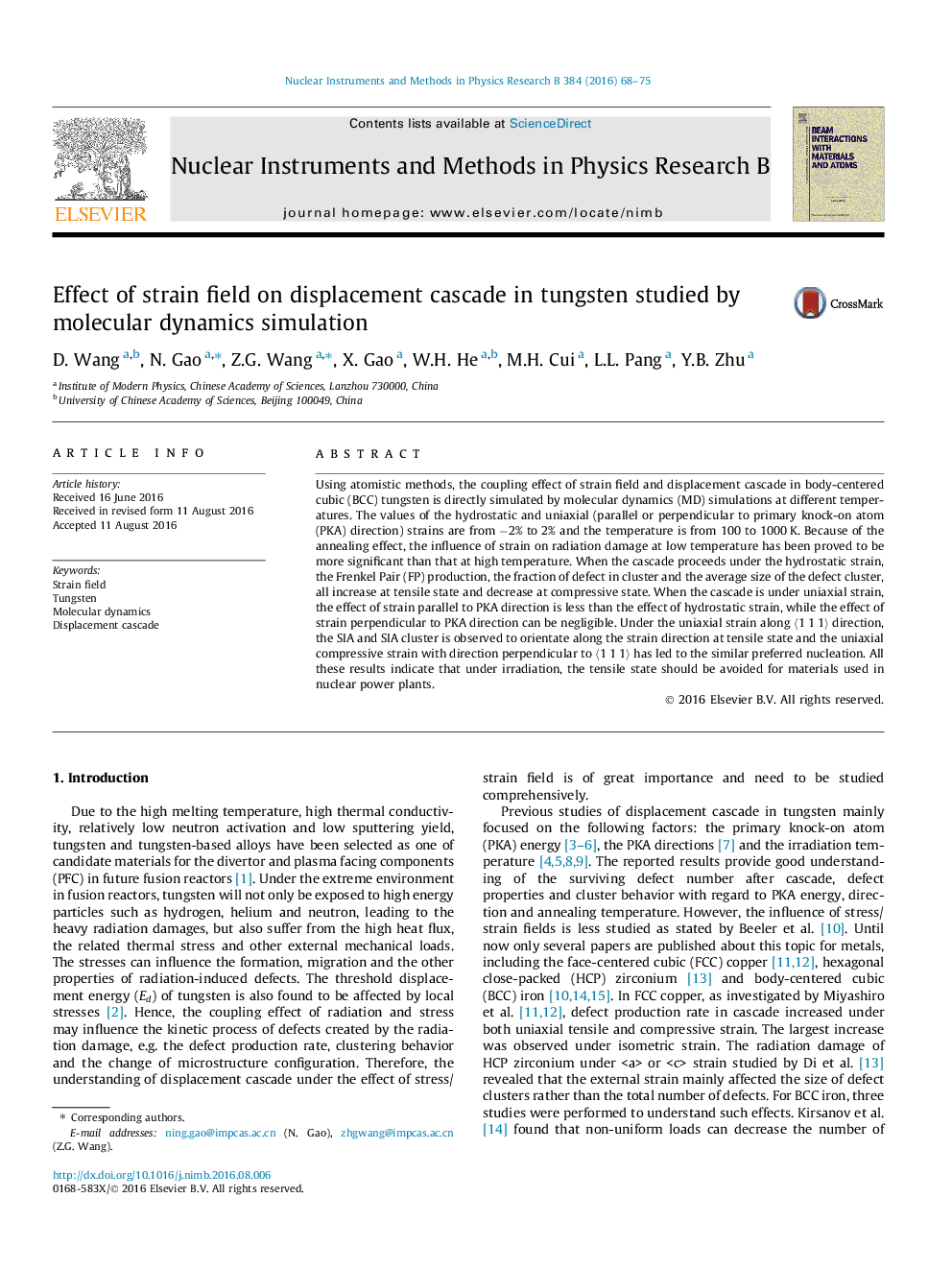| Article ID | Journal | Published Year | Pages | File Type |
|---|---|---|---|---|
| 8039598 | Nuclear Instruments and Methods in Physics Research Section B: Beam Interactions with Materials and Atoms | 2016 | 8 Pages |
Abstract
Using atomistic methods, the coupling effect of strain field and displacement cascade in body-centered cubic (BCC) tungsten is directly simulated by molecular dynamics (MD) simulations at different temperatures. The values of the hydrostatic and uniaxial (parallel or perpendicular to primary knock-on atom (PKA) direction) strains are from â2% to 2% and the temperature is from 100 to 1000Â K. Because of the annealing effect, the influence of strain on radiation damage at low temperature has been proved to be more significant than that at high temperature. When the cascade proceeds under the hydrostatic strain, the Frenkel Pair (FP) production, the fraction of defect in cluster and the average size of the defect cluster, all increase at tensile state and decrease at compressive state. When the cascade is under uniaxial strain, the effect of strain parallel to PKA direction is less than the effect of hydrostatic strain, while the effect of strain perpendicular to PKA direction can be negligible. Under the uniaxial strain along ã1Â 1Â 1ã direction, the SIA and SIA cluster is observed to orientate along the strain direction at tensile state and the uniaxial compressive strain with direction perpendicular to ã1Â 1Â 1ã has led to the similar preferred nucleation. All these results indicate that under irradiation, the tensile state should be avoided for materials used in nuclear power plants.
Related Topics
Physical Sciences and Engineering
Materials Science
Surfaces, Coatings and Films
Authors
D. Wang, N. Gao, Z.G. Wang, X. Gao, W.H. He, M.H. Cui, L.L. Pang, Y.B. Zhu,
